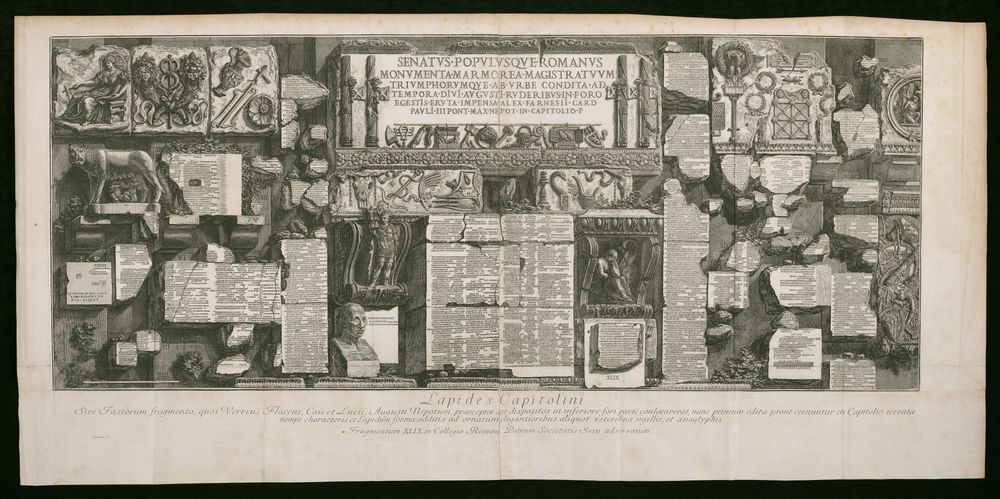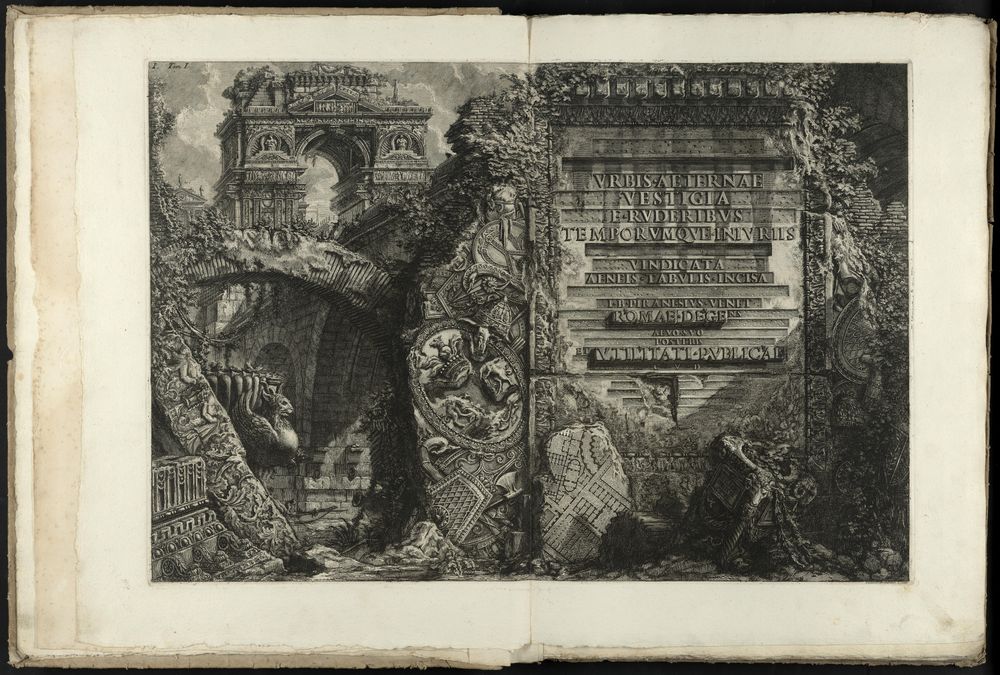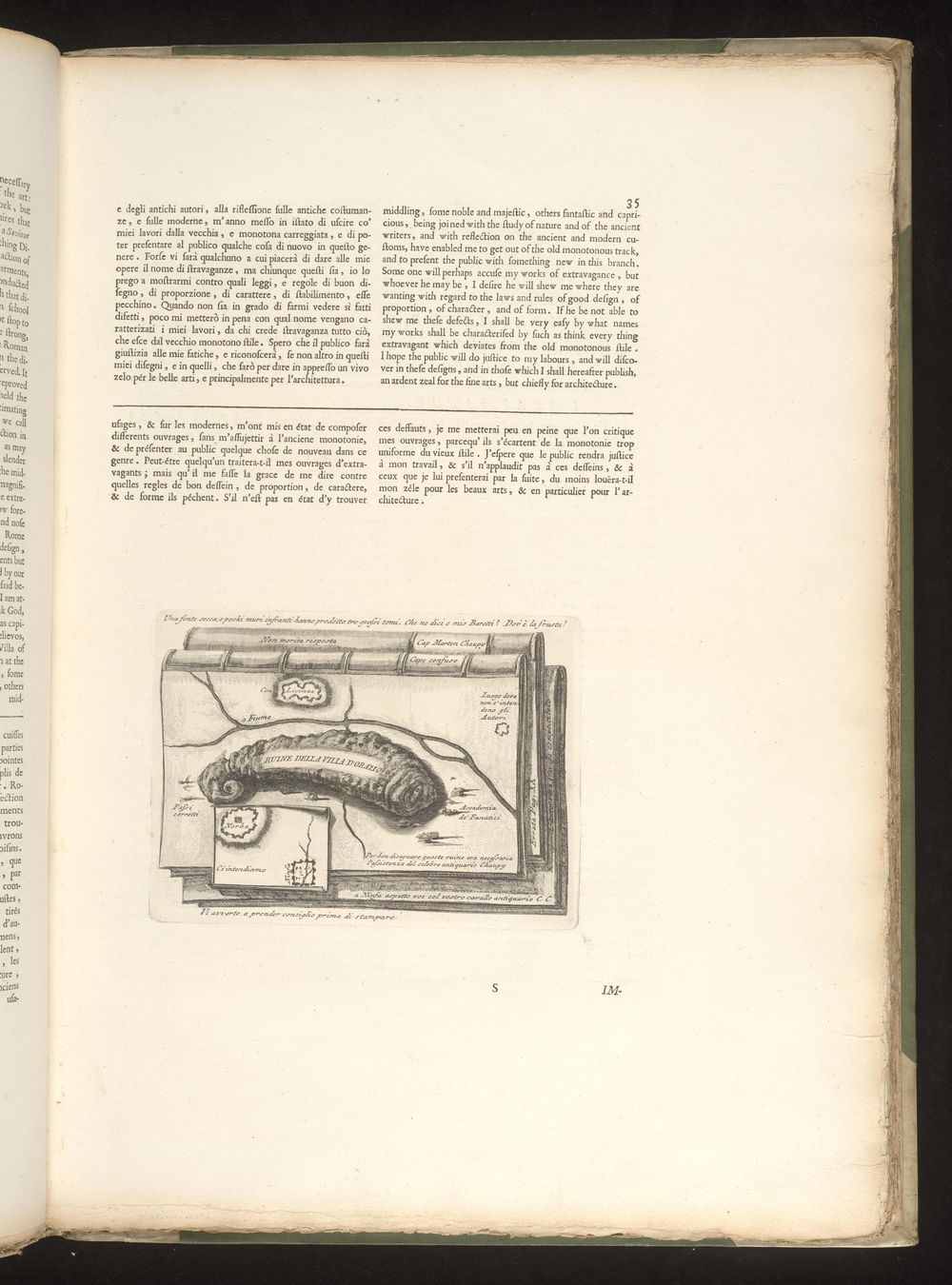Complimentary Text & Image
GIOVANNI BATTISTA PIRANESI (1720–1778)
The Fasti Capitolini, in Lapides Capitolini sive Fasti Consulares Triumphalesque Romanorum. Rome, 1762
Rare Books, Department of Special Collections, Princeton University Library
How much did evidence tell Piranesi about the past, and how much did he invent?
Piranesi explored this question in the Lapides Capitolini. The book reproduces two inscriptions: a list of Roman rulers and a list of Roman triumphs. Fragments of these inscriptions were unearthed in the Forum in 1547, and installed in the Palazzo dei Conservatori on the Capitoline Hill. By attempting to reconcile the names and dates written on the stones with those given by textual sources, historians had sought to create complete histories of Rome. Piranesi’s Lapides contains such a chronology. The book’s long foldout plate shows the inscriptions arranged on the palace wall, the spaces around them filled in with Roman sculptures.
GIOVANNI BATTISTA PIRANESI (1720–1778)
Le Antichità Romane, vol. 1. Rome: A. Rotilj, 1756
Rare Books, Department of Special Collections, Princeton University Library
Piranesi’s Antichità Romane was his first book that interleaved a learned text with printed illustrations. Presenting “many years of indefatigable, exacting observations, excavations, and research,” as its text proudly stated, the book reconstructed ancient Rome in words and images. After James Caulfeild withdrew his promised financial support for the book, Piranesi changed his original dedication, hacking away Caulfeild’s name and coat-of-arms from the inscription.
GIOVANNI BATTISTA PIRANESI (1720–1778)
Diverse maniere d’adornare i cammini ed ogni altra parte degli edifizi: desunte dall’architettura Egizia, Etrusca, e Greca con un Ragionamento Apologetico in difesa dell’Architettura Egizia, e Toscana. Rome: Nella Stamperia di Generoso Salomoni, 1769
Rare Books, Department of Special Collections, Princeton University Library
Piranesi had a vicious sense of humor. A satirical vignette serves as the tailpiece to “An Apologetical Essay in Defence of the Egyptian and Tuscan Architecture,” which Piranesi published within the Diverse maniere, his book of mantelpiece designs. The tailpiece skewers Bernard Capmartin de Chaupy’s recently published Découverte de la maison de campagne d’Horace, on the search for Horace’s villa. With the distinctive shape of the topographical element plopped on the book’s cover, Piranesi signalled his opinion of Chaupy’s almost completely unillustrated work. The vignette demonstrates the extent to which producing books himself had placed Piranesi directly in conflict with others.


